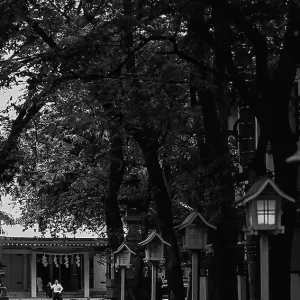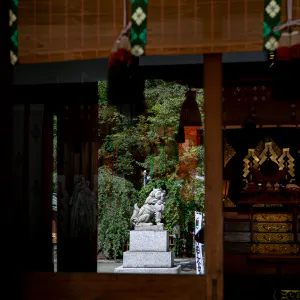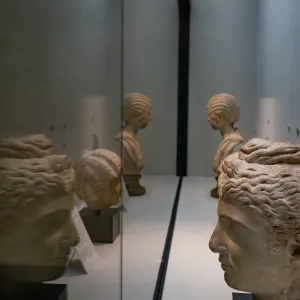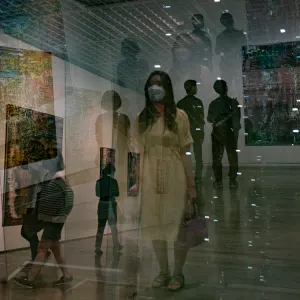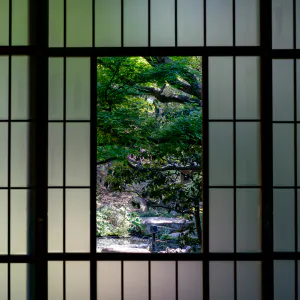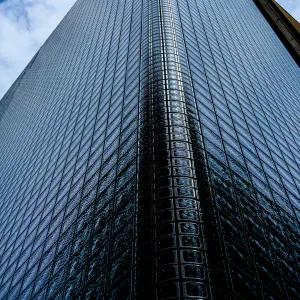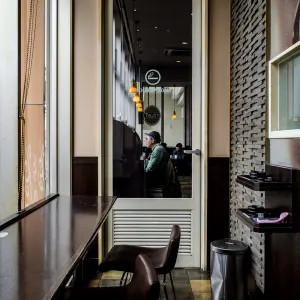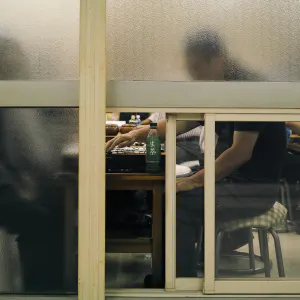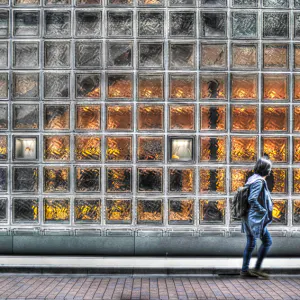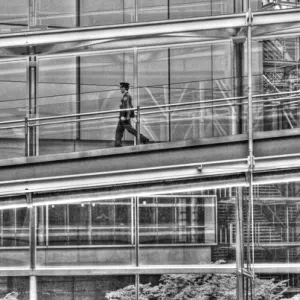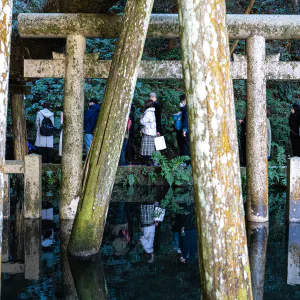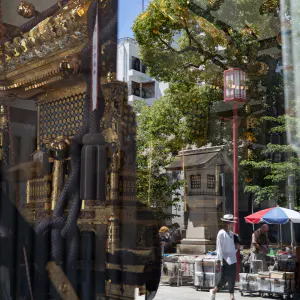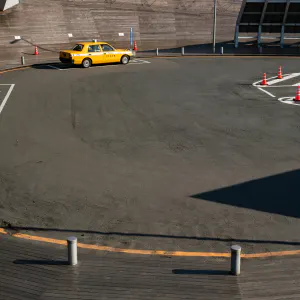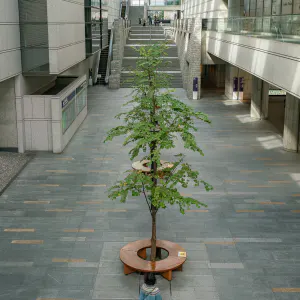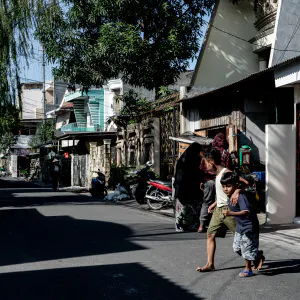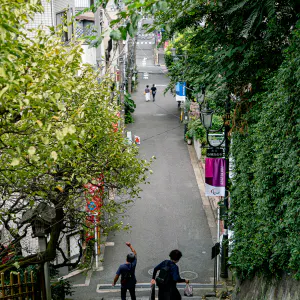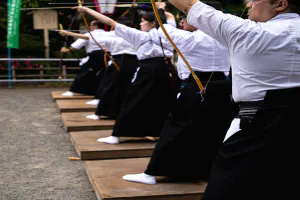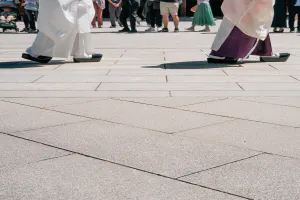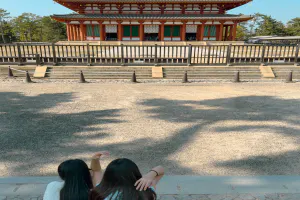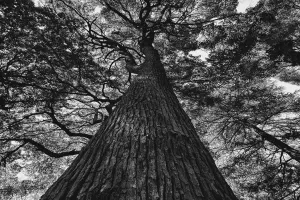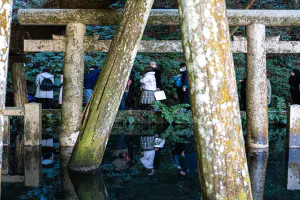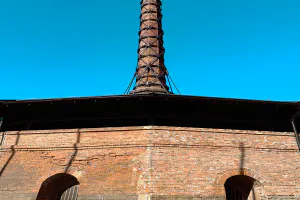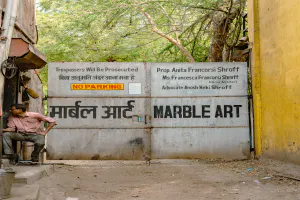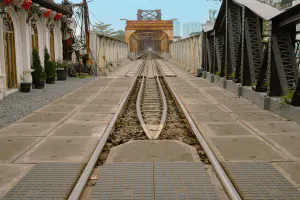The modern worship hall of Akagi Jinja Shrine was open with its glass walls
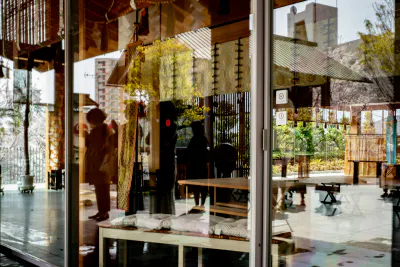
It seems to me that even if the pavilions of Shinto shrines and the halls of Buddhist temples have deteriorated, they are not rebuilt in a different form than before. Even if modern state-of-the-art technology is used in places that cannot be seen, the exterior is often reconstructed as it was in the past. This may be because they feel that replacing the exterior with a new one would destroy the traditions they have built up over the years.
This thought occurred to me when I visited Akagi Jinja Shrine, where the shrine itself was rebuilt as part of a revitalization project. According to legend, the shrine was built in 1300, so there must be some historical accumulation somewhere, but I could not find it. Even looking at the worship hall with its large glass windows, it is difficult to feel the long history of the shrine. The modern structure is smart, but it is not suitable for showing off the accumulation of history.
Furthermore, the glass walls not only do not evoke a sense of long history, but also seem to remove any sense of mystery. I think that the openness of the building reduces its mystique. As someone who feels that mystique has something to do with what is not to be seen, I cannot help but feel that if the interior can be seen clearly through the glass walls, it will diminish the sense of the divine.
| Jun 2022 IN THE CITY TOKYO | |
| AKAGI MOTOMACHI GLASS REFLECTION SHRINE |
PHOTO DATA
No
12289
Shooting Date
Apr 2022
Posted On
June 7, 2022
Modified On
August 13, 2023
Place
Akagi Motomachi, Tokyo
Genre
Still Life Photography
Camera
SONY ALPHA 7R II
Lens
ZEISS LOXIA 2/35
